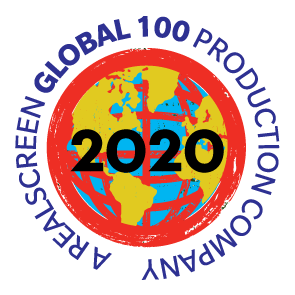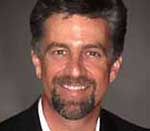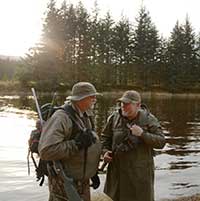From the heartland
Chris Dorsey, president and CEO of US Indie Dorsey Pictures, tells Clive Whittingham that prodcos based on America’s east and west coasts often miss the point when it comes to casting reality shows.
Chris Dorsey In the US, the scripted production companies are mostly on the west coast, the unscripted ones mostly on the east. The unscripted prodcos send their teams off to Alaska and Louisiana, and find people surviving the cold, killing alligators, working in pawn shops or auctioning lock-up garages. The broadcasters moan that there is too much derivative programming, and the production companies say the commissioning editors are risk-averse. That’s it in a nutshell. Chris Dorsey would like to think there’s a different way. Basing his Dorsey Pictures outfit on the south-east of Denver gives his staff a chance to interact with the people of America’s heartlands in a way he says other prodcos and networks often get badly wrong. “The mistake a lot of networks make is they look at bearded and redneck and think ‘stupid,’” Dorsey says. “They’re not stupid, it’s simply a different world view. They’re laughing all the way to the bank in many cases – Duck Dynasty is the classic example. “Our unique value in the production space is understanding the difference between heartland and redneck. Network execs often don’t get it and a lot of networks failed in that arena because they thought they knew what they were looking for but didn’t. We know the difference between characters and caricatures. A lot of networks go for the latter and they don’t last. People who are of that space see through it instantly.” What it hasn’t done, as yet, is lead Dorsey Pictures into any particularly new or unique geographical territories – a quick glance at the company’s website shows Building Alaska for DIY, Guiding Alaska for Travel Channel, Living Alaska for HGTV and Kodiak for Discovery Channel.
Dorsey Picture’s Kodiak for Discovery Channel
The late UK darts commentator Sid Waddell once famously said: “When Alexander of Macedonia was 33 he cried salt tears because there were no more worlds to conquer. [Darts champion] Eric Bristow is only 27.” Is it simply the case that after a decade of reality television saturation there are just no more new worlds to discover and it’s about finding fresh, innovative characters and ideas in the same places? “I hear from networks that Alaska has been done,” Dorsey admits. “We do as much Alaska programming as any other production company in America but it’s like five states. You have to remember south-east Alaska is completely different from the interior, completely different from the North Slope, completely different from Kodiak Island – different landscapes, people and characters. Yes there are a lot of producers and crews up there but there is still a lot of remoteness and new people going to Alaska for their own reasons. There is plenty of territory that hasn’t been explored. “We’re looking for great characters all over the country, the north woods of Maine and Wisconsin for instance – places where dialects are different and world views are different.” And Dorsey Picture’s unique location means it is well placed to find those characters. Dorsey says the production industry can be too insular, to its detriment. “We’re not in LA, we’re not having drinks every night with the same production people,” he says. “We’re talking to farmers, people starting weird jobs, people living in the country, living off the grid, survival people. That’s where we’re hanging out. “Producers can talk to each other all we want. If we think we’ll have a new idea based on the same people talking we’ll be disappointed. That’s why we like being some place other than New York or LA. I’ve nothing against those places. That world is saturated with production companies and I don’t know how many fresh ideas will come out of there.” Dorsey Pictures, now it’s established, is also being more careful about which networks it works with. The impression often created by producers is that green lights are so rare that any scraps that fall from the table must be gobbled up instantly. But Dorsey doesn’t see it like that and thinks a prodco must be willing to walk away from networks unsure of their brand or identity, or risk seeing their series fall flat and lose money. “There are a handful of networks that have brands. They know who they are because they’ve had success and they’re comfortable with their filters and who their audience is,” Dorsey says. “Then there are other networks who don’t know who the hell they are and the concept of a brand is completely foreign to them.” With a branded entertainment arm to his production company, Dorsey says he’s more focused on identity and brand than most producers and it’s a key determiner when he’s making a decision on who to launch a series with. “A brand is nothing more than a promise made and a promise kept over time,” he says. “How many networks can you name where you know what you’ll get when you tune in? Networks like HGTV, DIY – strong well marketed brands you know what you will get. A lot of networks are trying to figure out what they are, so when it comes to pitching they’re risk averse, like most businesses. “As a business we have to say ‘Do we want to partner with somebody who doesn’t know who the hell they are and throw stuff against the wall to see if it sticks, or do we want to go with somebody who has a brand, knows what they are, will have a strong lead-in and put some juice behind it?’ The strong brands give the greatest chance of success, which is renewal, because it’s tough to make a business on lots of single series.” For that reason, he’s reluctant to get into shooting pilot episodes because “if a sizzle and character piece don’t give you the confidence that it will work on your network, we’re probably going to be looking for other partners.” Dorsey wants to help networks, as well as simply deliver shows – potentially finding marketing partners or advertisers, letting executives know there’s marketable footage being shot in the field coming down the pipeline, staying active in the scheduling process to give the show the best chance. And it’s working. Recent commissions and premieres include Living Big Sky and Tiny House Big Living for HGTV, and Mega Decks and The Treehouse Guys for DIY. Orion posted 269% revenue growth in 2014 with 11 series greenlit on seven networks. Building Alaska grew its DIY audience 67% from first season to second. Perhaps the key to cracking the so-called ‘creative crisis’ and finding the unique characters from America’s heartland is to just go and live with them.
|





